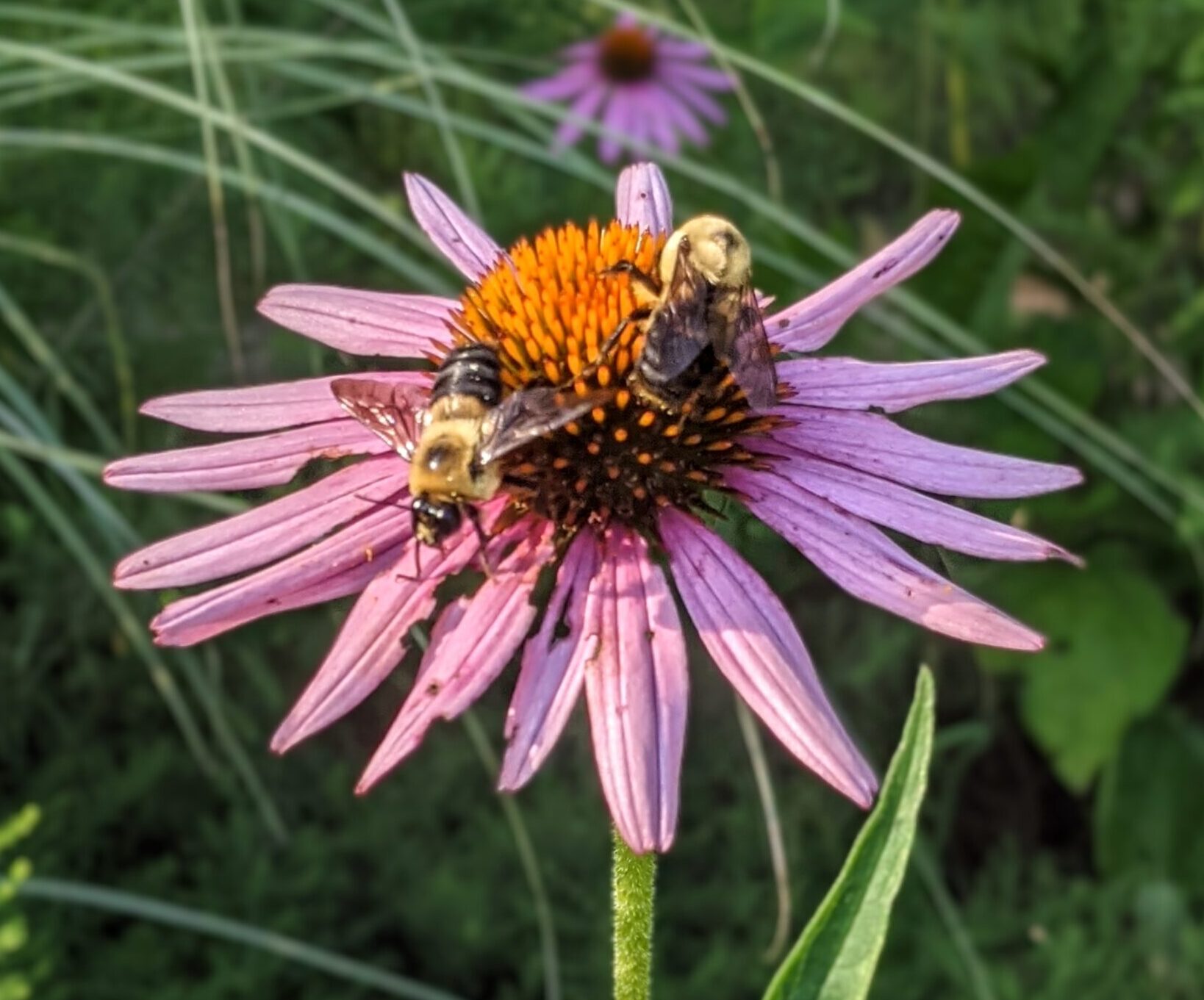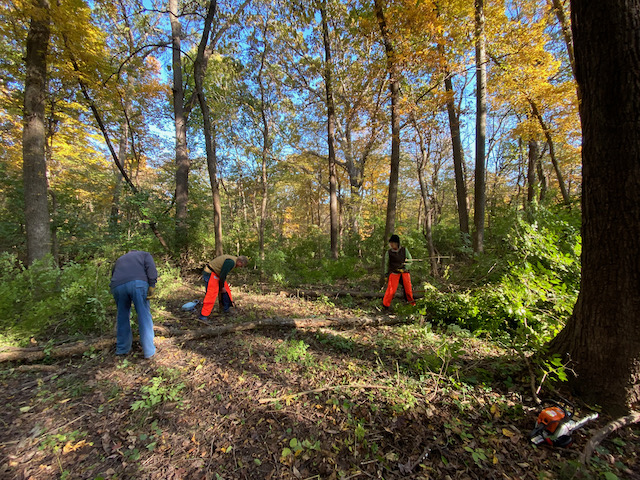Pollinator Plants for Your Garden — Part 3
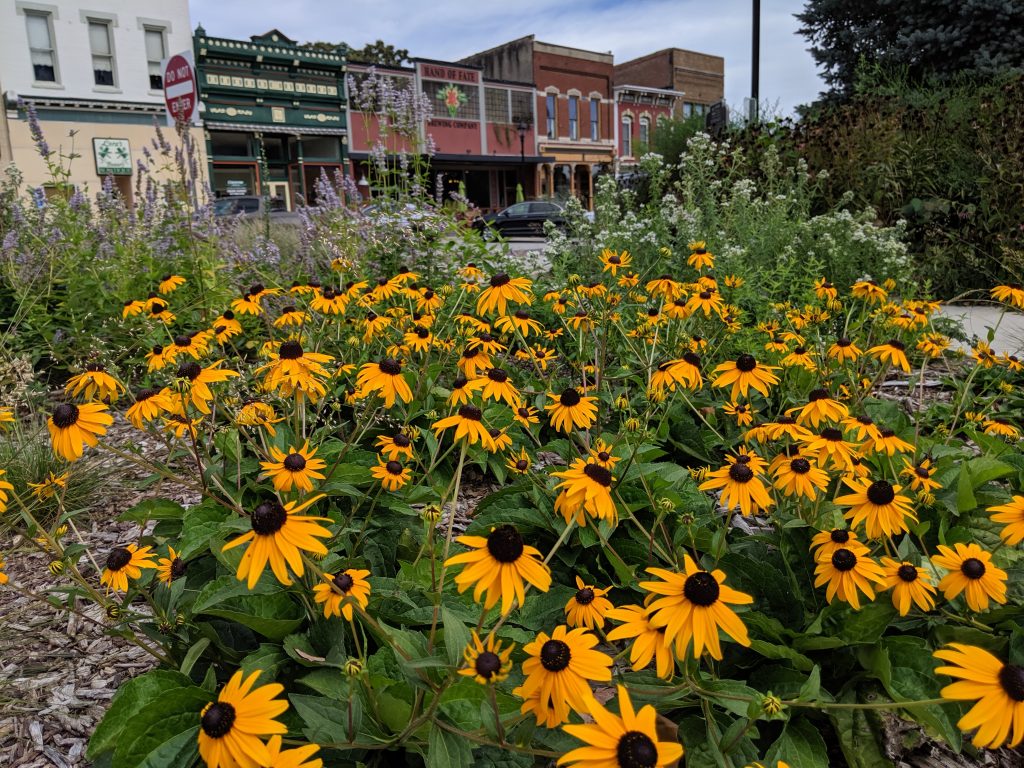
This is Part 3 of a 4 part blog series describing 12 easy-to-grow plants for attracting pollinators (butterflies, bees, etc) to your garden. If you missed Parts 1 and 2, you can read Part 1 here; read Part 2 here. The 12 species discussed in the series are all available for free (while supplies last!) a locations around Petersburg–see December 12th blog, Create Your Own Pollinator Habitat at Home, for details.
Gold Coneflower AKA Black-eyed Susan (Rudbeckia fulgida)
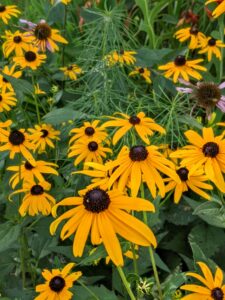
Direct sow in late fall, pressing into the surface of the soil since this plant needs light to germinate. For spring planting or starting indoors, mix the seeds with moist sand and store in the refrigerator for 30 days before planting. Keep the soil lightly moist. Select a planting site with rich soil in full to part-sun. Prolific bloomer with showy yellow daisy-like flowers July through September. Deadheading prolongs the bloom time. Gold coneflower is a great food source for many butterflies, bees, and other pollinators and makes an attractive cut flower. Birds feast on the seed through the winter.
Reaching only about 2’, this plant looks great massed in perennial borders. Once well-established, it will reseed and spread via rhizomes. It is easy to divide and transplant. From growing this on the square, we’ve noticed this is one of the most sensitive to drought. It could use a bit of supplemental water in prolonged drought in the especially hot, dry conditions streetside.
Rattlesnake Master (Eryngium yuccifolium)
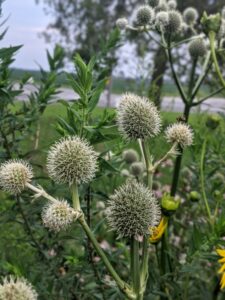
Direct sow Rattlesnake master in late fall, planting seeds 1/4″ deep and lightly compacting the soil. For spring planting or starting indoors, mix the seeds with moist sand and stratify in the refrigerator for 60 days before planting. Keep the soil lightly moist after planting. Select a well-drained planting site in full sun.
Showy spherical flowers bloom on stalks up to 4’ in late summer, attracting a wide variety of pollinators. Beautiful blue-green foliage and seedheads hold up well through the summer and fall. It is very drought and deer resistant! The unique flower really pops when paired with colorful blooms like coneflower, vervain, Joe Pye weed, or blazing star. It really deserves to be used in garden plantings more frequently!
Purple Coneflower (Echinacea purpurea)

A well-known and easy to grow prairie favorite! Direct sow coneflower in spring, planting seeds 1/4″ deep and lightly compacting the soil, as it does not require stratification. Keep the soil lightly moist. Select a well-drained planting site in full to part sun. At maturity, the flowers reach 4’. Prolific bloomer with showy pink-purple flowers July through September. Flowers provide a great food source for many butterflies, bees, and other pollinators, and it serves as a host plant for the silvery checkerspot and the Ottoe skipper. The spiky seed heads are a popular food source for many birds. The seeds are easy to collect– we just have to beat the finches to them! The standing seed heads add visual interest in the winter garden, as well as food for wildlife.
Coneflower readily reseeds and is easy to transplant. It also makes an attractive cut flower.
